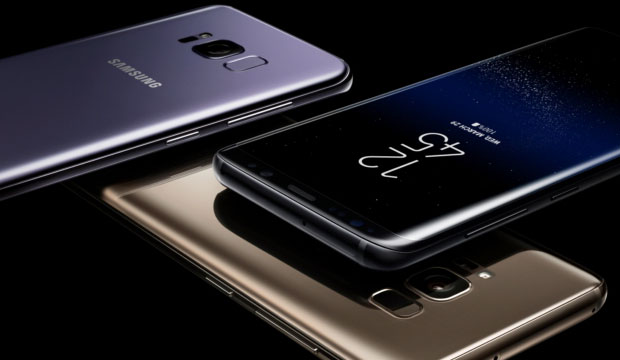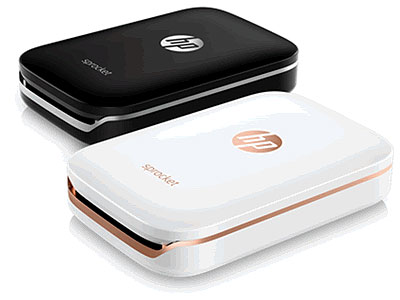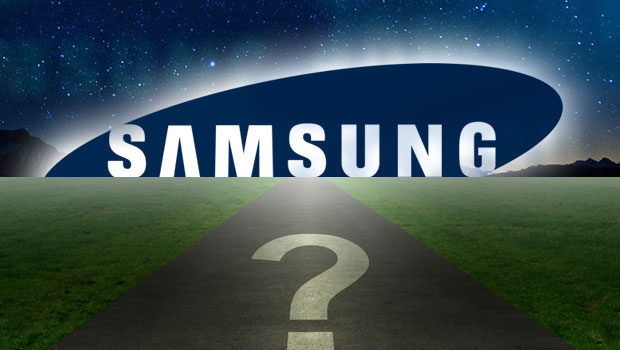The new Samsung Galaxy S8 has launched, and its target of choice is the as yet unlaunched Apple iPhone 8 Anniversary Edition. These phones are critical for both companies. Apple survives largely off the iPhone today, and Samsung is trying to recover both from its burning phone problem and from its top executive being arrested on bribery charges.
Neither firm can afford a big loss to the other, and Samsung just came out of the gate with one hell of an opening salvo.

A big difference is that Apple can focus on product, while Samsung has to restore its image, and that is a far harder thing to do.
I’ll share some thoughts about this coming battle and close with the closest thing in market to an iPod-like device, although it doesn’t play music. It’s a printer called the “Sprocket.”
Apple’s Problem
Apple’s iPhone both surprised and, for a time, drove the smartphone market. It helped wipe out Palm, forced BlackBerry to make massive changes, and knocked the once-dominant Nokia down to the third tier of mobile phone players.
On the other hand, Apple’s attempts at diversification haven’t gone very well. The iPad is no longer the PC killer it once was thought to be, the iPod is all but gone, and the Apple Watch was a disappointing misfire. (Ironically, it is still the most successful single product in its class, suggesting an as-yet-unresolved class problem.)
Apple no longer controls the smartphone market, though. Control now is shared — and firms using Google’s Android platform represent a significantly larger share. In this new Android-led world, Samsung has been the company to beat.
Apple has had an amazing run recently, largely because Samsung’s halo phone, the Samsung Note 7, had a nasty tendency to catch fire. Samsung didn’t address that problem well at all, leading to the phone being banned from planes and ultimately recalled.
That didn’t give Apple a sustainable advantage, though, because Samsung didn’t fail. That means the gains that Apple got likely will go away once Samsung re-enters the high-end segment and recovers its brand, which really is the bigger problem. It has made a start — recovering the phone is what it just did.
The long-term problem for Apple is that Apple’s margins are industry-leading but Samsung’s aren’t. That means Samsung and others can put more into their phones and still charge less. That’s why the S8 is so scary. It is a technology showcase that Apple can’t match unless it cuts into margins, and Apple can’t do that without collapsing its valuation.
In effect, Apple is between a rock and a hard place if Samsung can execute — but execution isn’t easy.
Samsung’s Problem
Thanks to the burning phones and a tendency for some of Samsung’s washing machines to explode of late, folks aren’t trusting Samsung much. This has resulted in Samsung having to run an expensive campaign to recover its brand.
Having worked on a similar project at IBM decades ago, I know this kind of problem is neither cheap nor quick to fix. It took IBM millions and five years to recover its brand. Samsung’s market is both more forgiving and more fickle, which suggests it could do it far faster, but I still think it will take at least two years of solid execution and millions in marketing.
This may not be helped by the fact it currently is selling refurbished Galaxy Note 7s, which still are banned from airplanes. Given that the failure was caused by a design feature rather than a component problem, these phones still could catch fire.
This seems like a continuation of the tactical thinking that got Samsung into this mess in the first place, and if one of these refurbished phones should catch fire, it could result in a huge advantage for Apple.
It also suggests that the problem created cash liquidity issues that likely resulted in this incredibly risky decision.
A lot of folks have speculated that if the new phone catches fire, then Samsung is screwed. However, the reality is that none of its phones can catch fire, because that will cause people to disbelieve the message of a new, more quality-focused Samsung.
So, the phone it launched may be up to the challenge of restoring Samsung’s brand, but the company’s execution appears to be falling short in other respects. It still could fail due to the decision to resell the problematic Note 7s and the sheer time it will take to recover its image.
Wrapping Up
With a healthy and well-executing Samsung, the new Galaxy Note S8 could have done scary things to Apple’s iPhone 8 sales, particularly because Apple simply can’t afford to match in its phone the kinds of advancements that Samsung has showcased.
However, Samsung isn’t healthy, and its decision to resell the problematic Note 7 is a showcase of what has been a string of excessive risks. An Apple supporter could rig a refurbished Note 7 to catch fire in a critical location, and the risk that Samsung represents could be removed. That’s a hell of a temptation for a lot of Apple employees and partners, even if Apple management weren’t involved in such a move.
Further, Apple just torpedoed Andy Rubin’s iPhone killer before it launched, suggesting Samsung should be thinking far more defensively. Apparently, Tim Cook did pick up at least one Steve Jobs skill — and if Samsung doesn’t watch out, this one will bite it in the butt.
Unless Samsung suddenly gets a lot smarter, this round likely will go resoundingly to Apple, despite what otherwise is a very strong effort with its new S8 phone.
Against Apple, it generally is the execution, not the product, that makes the critical difference, and Samsung remains overmatched.
The iPod’s method of success actually was defined well before the iPod launched and showcased by earlier successes, like the Sony Walkman, Flip and Polaroid Cameras. People will flock to products that easily do something they want done but that currently is too difficult to do.
Back in the iPod time, thanks to the record labels, it was really hard to put music onto a truly portable player. The iPod fixed that. Even though it was wicked expensive at the time and took three versions to take off, it transformed the market once it did.
The closest product to the iPod currently in market is, strangely, a printer. It is the HP Sprocket — a pocketable printer that does just one thing easily and well: It prints small pictures in color from your smartphone. You can give these pictures to friends or family, particularly those who don’t have smartphones, or you can stick them to things.

Apparently, this little printer has been a real hit with folks who like to take selfies and with those who like to stick pictures to things. It costs around US$130. The pictures cost about 50 cents each to print, and they have adhesive backs so you can stick them to things.
You know, what I think is particularly funny is that Apple’s new iPhone ad has at its core printed stickers that folks stick on people. iPhones can’t do this, but the Sprocket can (albeit much smaller).
Years ago, Apple tricked HP into not launching an MP3 player that scared Steve Jobs enough to get personally involved in the scam. It would be ironic if the next “iPod” were a printer from HP. For that reason, and because this thing is actually pretty cool, the HP Sprocket is my product of the week.

























































On alighter note, Samsung Note7 refurbished should be sold with a free fire extinguisher….
That’d be my must have accessory…